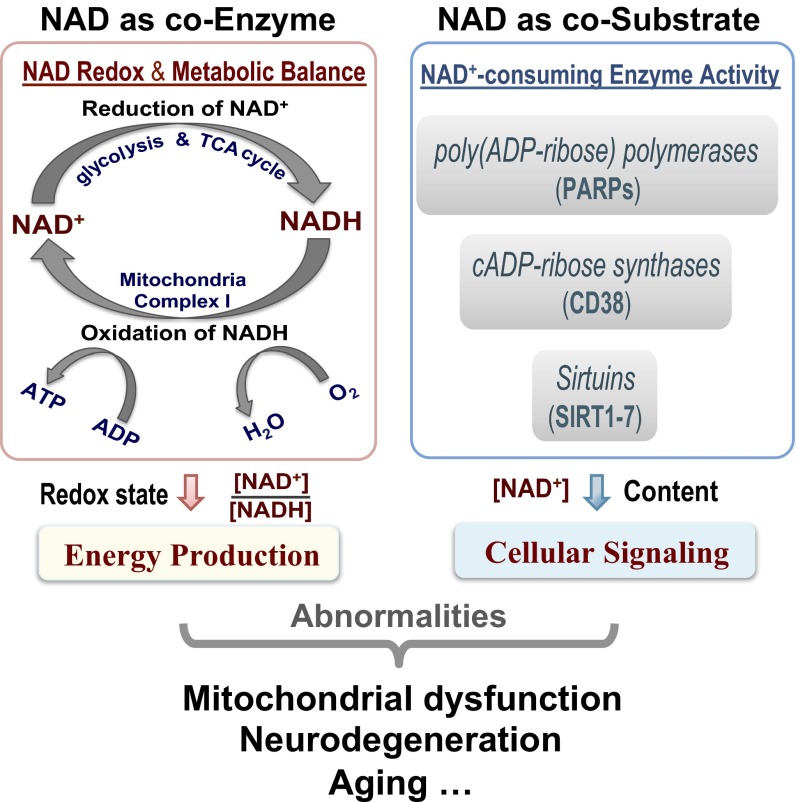Fig. 4.
A simplified scheme summaries the major functions of intracellular NAD: NAD as a coenzyme in regulating the glucose–oxygen metabolic balance that controls the cerebral ATP energy production through the NAD+/NADH redox state (Left), and NAD+ as a cosubstrate in modulating the activities of the NAD+-consuming enzymes that mediate the cellular signaling processes through the availability of cellular NAD+ (Right). The abnormality in either one or both of these functions could lead to mitochondrial dysfunction, neurodegeneration, or age-related metabolic disorders.

